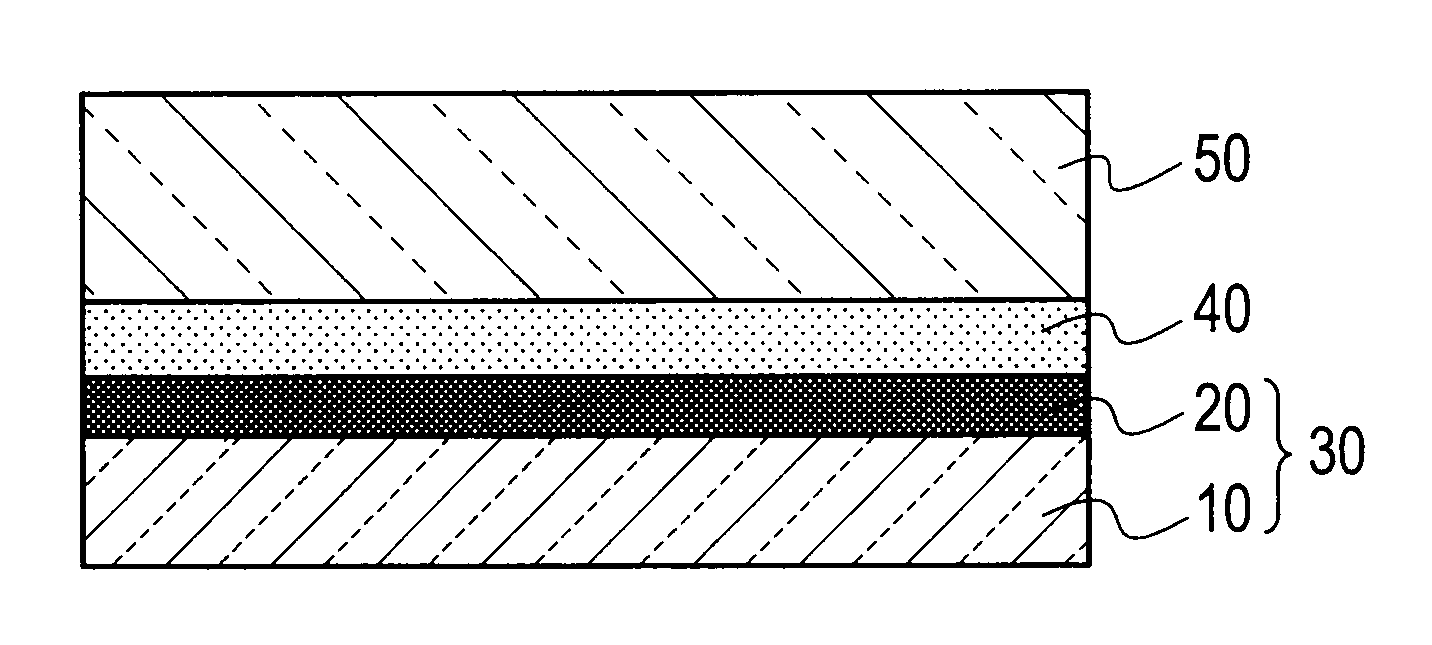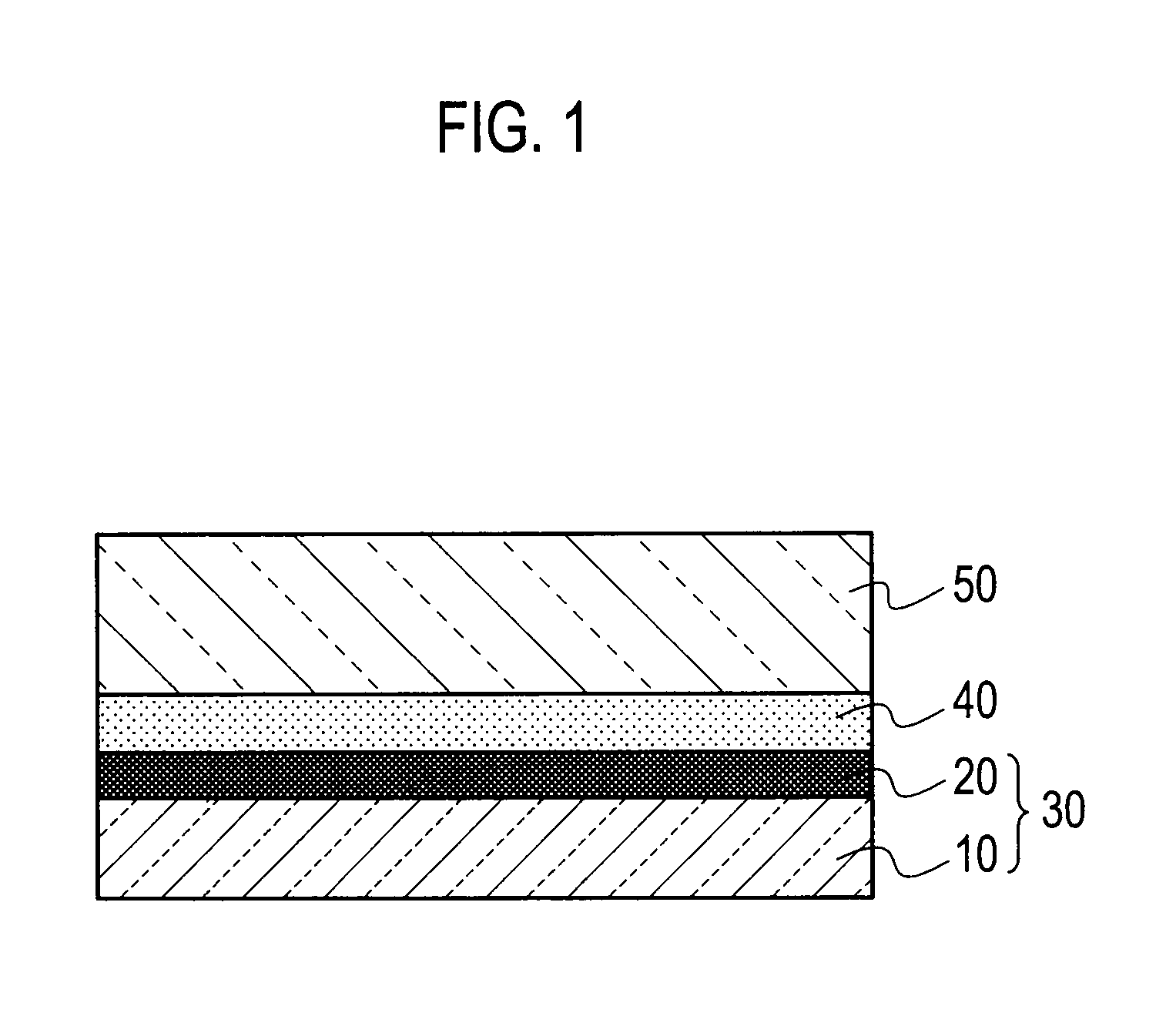Printing ink composition for laminate
a technology of ink composition and laminate, which is applied in the direction of inks, packaging, synthetic resin layered products, etc., can solve the problems of difficult continuous printing and deterioration of printing effect, and achieve excellent processing adaptability, excellent anti-blocking property, and excellent adhesiveness.
- Summary
- Abstract
- Description
- Claims
- Application Information
AI Technical Summary
Benefits of technology
Problems solved by technology
Method used
Image
Examples
synthesis example 1
Synthesis of Polyurethane Resin (a)
[0088]219.6 parts of a polyoxytetramethylene glycol having a number average molecular weight of 2000 and 56.6 parts of isophorone diisocyanate were fed into a four-necked flask equipped with a stirrer, a thermometer, a dropping funnel, a Dimroth condenser and a nitrogen gas inlet tube, and while nitrogen gas was introduced, the mixture was slowly heated to 90° C. and was allowed to react until the NCO % reached 4.4%. Subsequently, 11.6 parts of diethylaminoethanol was added to the obtained reaction product, and the mixture was allowed to react further for 3 hours at 90° C., to thereby obtain a prepolymer. The prepolymer was transferred to a drip tank using 115 parts of ethyl acetate.
[0089]Subsequently, 12.2 parts of isophorone diamine, 0.002 parts of dibutylamine, 345.0 parts of isopropyl alcohol and 240.0 parts of ethyl acetate were fed into a reaction tank, and the prepolymer was added dropwise from the drip tank to the reaction tank over 30 minu...
synthesis example 2
Synthesis of Polyurethane Resin (b)
[0090]122.6 parts of a polyester diol formed from adipic acid and 3-methyl-1,5-pentanediol and having a number average molecular weight of 2,000, 132.9 parts of a polyoxytetramethylene glycol having a number average molecular weight of 2,000, and 37.6 parts of isophorone diisocyanate were fed into a four-necked flask equipped with a stirrer, a thermometer, a dropping funnel, a Dimroth condenser and a nitrogen gas inlet tube, and while nitrogen gas was introduced, the mixture was slowly heated to 90° C. and was allowed to react until the NCO % reached 1.2%. Subsequently, 0.399 parts of diethylaminoethanol was added to the obtained reaction product, and the mixture was allowed to react further for 3 hours at 90° C., to thereby obtain a prepolymer. The prepolymer was transferred to a drip tank using 115.0 parts of ethyl acetate.
[0091]Subsequently, 6.5 parts of isophorone diamine, 0.05 parts of dibutylamine, 345.0 parts of isopropyl alcohol and 240.0 p...
synthesis example 3
Synthesis of Polyurethane Resin (c)
[0093]177.3 parts of a polyester diol formed from adipic acid and 3-methyl-1,5-pentanediol and having a number average molecular weight of 2,000, 53.0 parts of a polyoxytetramethylene glycol having a number average molecular weight of 2,000, and 50.0 parts of isophorone diisocyanate were fed into a four-necked flask equipped with a stirrer, a thermometer, a dropping funnel, a Dimroth condenser and a nitrogen gas inlet tube, and while nitrogen gas was introduced, the mixture was slowly heated to 90° C. and was allowed to react until the NCO % reached 3.3%. Subsequently, 4.05 parts of diethylaminoethanol was added to the obtained reaction product, and the mixture was allowed to react further for 3 hours at 90° C., to thereby obtain a prepolymer. The prepolymer was transferred to a drip tank using 115 parts of ethyl acetate.
[0094]Subsequently, 15.5 parts of isophorone diamine, 0.12 parts of dibutylamine, 345.0 parts of isopropyl alcohol and 240.0 part...
PUM
| Property | Measurement | Unit |
|---|---|---|
| temperature | aaaaa | aaaaa |
| temperature | aaaaa | aaaaa |
| viscosity | aaaaa | aaaaa |
Abstract
Description
Claims
Application Information
 Login to View More
Login to View More - R&D
- Intellectual Property
- Life Sciences
- Materials
- Tech Scout
- Unparalleled Data Quality
- Higher Quality Content
- 60% Fewer Hallucinations
Browse by: Latest US Patents, China's latest patents, Technical Efficacy Thesaurus, Application Domain, Technology Topic, Popular Technical Reports.
© 2025 PatSnap. All rights reserved.Legal|Privacy policy|Modern Slavery Act Transparency Statement|Sitemap|About US| Contact US: help@patsnap.com


